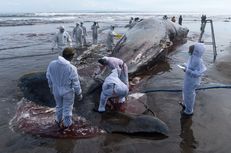More Regulations Needed to Ensure Safety in Indonesia's Electric Vehicle Development

Salty or polluted water also entails greater risks in connection with fire safety as such water conducts electricity better. This is not expected to cause a great risk, however, guidelines were developed for situations where flooding occurs too.
In Indonesia, additional regulations for electric cars should cover electromagnetic components, battery packs, and charging infrastructure, among others.
The country has no regulations concerning measures intended to mitigate thermal runaway. It might be a useful supplement to regulations on thermal stability when such regulations are developed.
For example, people should be informed regarding fire safety and which of the regulations about fire safety appear to suffice.
The government needs to prepare regulations for manufacturers that govern the high-voltage system of the electric car is isolated and designed in such a way that the system cannot provide an electric shock the surrounding water.
Water immersion pertains to the potential risks of electrocution when an electric car is partially immersed or fully submerged in water.
Therefore, the vehicle design is safe if submerged in water. Since 2014, ISO 12405 has included a test where the battery is completely or partially submerged in water. This test has not been explained in detail to the public and the main conclusion is that a short circuit can result in a potential discharge of harmful gas.
(This article is written by Laura Astrid H Purba, a civil servant at the Jakarta Investment Center and One Stop Integrated Service Agency. She is also studying for a Ph.D. in Environmental Law and is a researcher at the University of Indonesia. The views expressed in this article belong to the writer).
Simak breaking news dan berita pilihan kami langsung di ponselmu. Pilih saluran andalanmu akses berita Kompas.com WhatsApp Channel : https://www.whatsapp.com/channel/0029VaFPbedBPzjZrk13HO3D. Pastikan kamu sudah install aplikasi WhatsApp ya.































